Tonje Knutsen Sørdalen
A contrastive learning approach for individual re-identification in a wild fish population
Jan 02, 2023Abstract:In both terrestrial and marine ecology, physical tagging is a frequently used method to study population dynamics and behavior. However, such tagging techniques are increasingly being replaced by individual re-identification using image analysis. This paper introduces a contrastive learning-based model for identifying individuals. The model uses the first parts of the Inception v3 network, supported by a projection head, and we use contrastive learning to find similar or dissimilar image pairs from a collection of uniform photographs. We apply this technique for corkwing wrasse, Symphodus melops, an ecologically and commercially important fish species. Photos are taken during repeated catches of the same individuals from a wild population, where the intervals between individual sightings might range from a few days to several years. Our model achieves a one-shot accuracy of 0.35, a 5-shot accuracy of 0.56, and a 100-shot accuracy of 0.88, on our dataset.
Unlocking the potential of deep learning for marine ecology: overview, applications, and outlook
Sep 29, 2021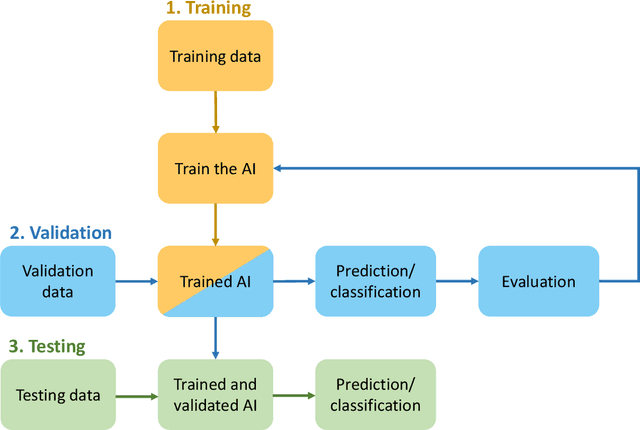
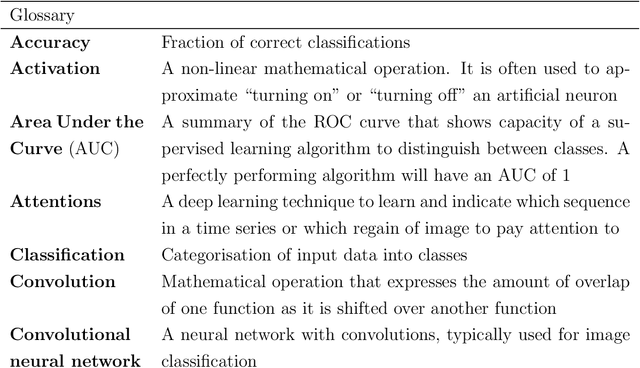
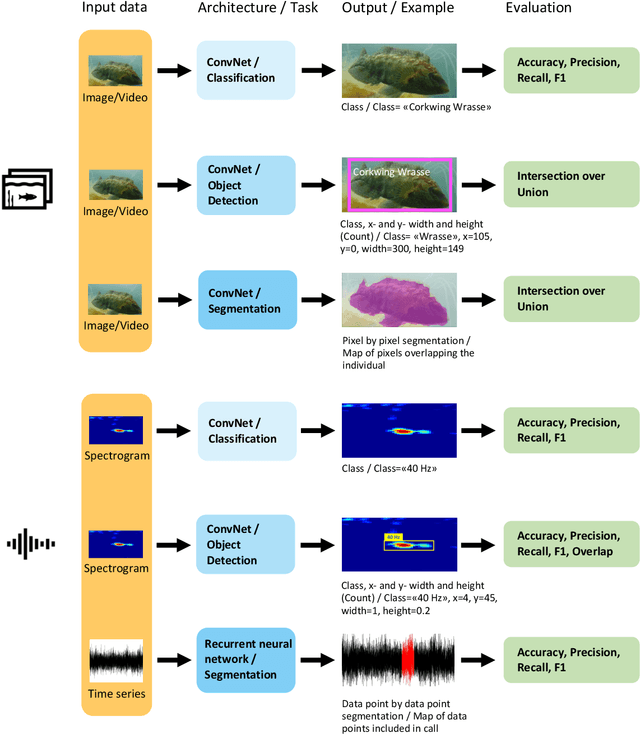
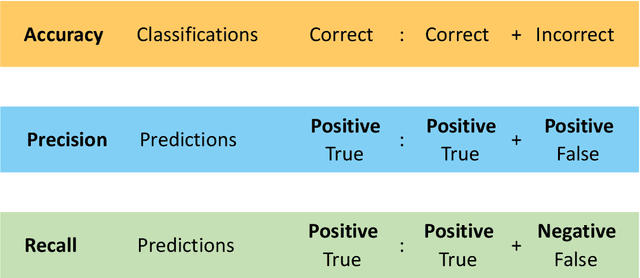
Abstract:The deep learning revolution is touching all scientific disciplines and corners of our lives as a means of harnessing the power of big data. Marine ecology is no exception. These new methods provide analysis of data from sensors, cameras, and acoustic recorders, even in real time, in ways that are reproducible and rapid. Off-the-shelf algorithms can find, count, and classify species from digital images or video and detect cryptic patterns in noisy data. Using these opportunities requires collaboration across ecological and data science disciplines, which can be challenging to initiate. To facilitate these collaborations and promote the use of deep learning towards ecosystem-based management of the sea, this paper aims to bridge the gap between marine ecologists and computer scientists. We provide insight into popular deep learning approaches for ecological data analysis in plain language, focusing on the techniques of supervised learning with deep neural networks, and illustrate challenges and opportunities through established and emerging applications of deep learning to marine ecology. We use established and future-looking case studies on plankton, fishes, marine mammals, pollution, and nutrient cycling that involve object detection, classification, tracking, and segmentation of visualized data. We conclude with a broad outlook of the field's opportunities and challenges, including potential technological advances and issues with managing complex data sets.
Temperate Fish Detection and Classification: a Deep Learning based Approach
May 14, 2020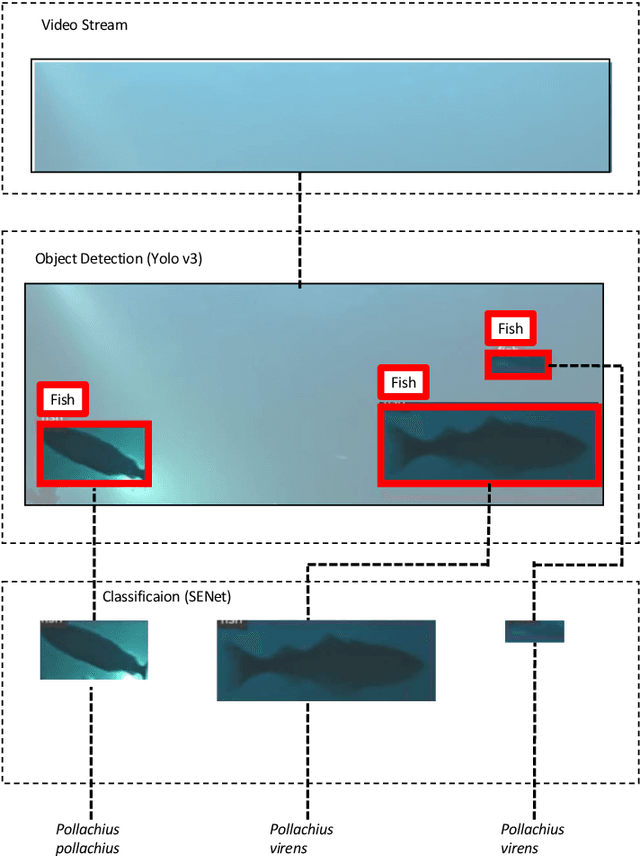
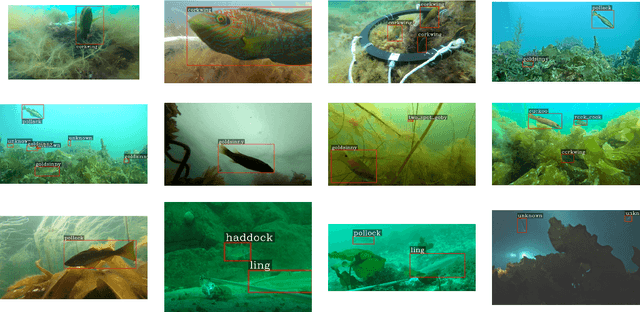
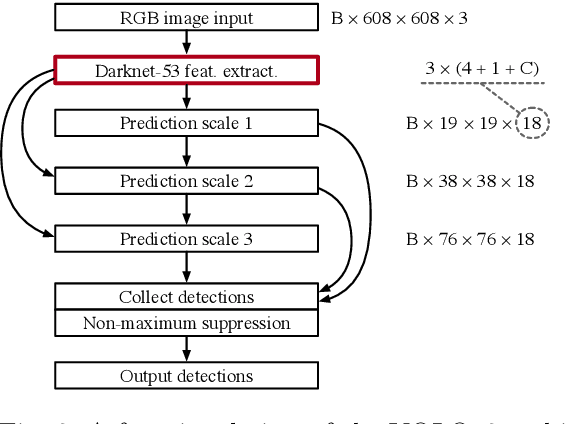

Abstract:A wide range of applications in marine ecology extensively uses underwater cameras. Still, to efficiently process the vast amount of data generated, we need to develop tools that can automatically detect and recognize species captured on film. Classifying fish species from videos and images in natural environments can be challenging because of noise and variation in illumination and the surrounding habitat. In this paper, we propose a two-step deep learning approach for the detection and classification of temperate fishes without pre-filtering. The first step is to detect each single fish in an image, independent of species and sex. For this purpose, we employ the You Only Look Once (YOLO) object detection technique. In the second step, we adopt a Convolutional Neural Network (CNN) with the Squeeze-and-Excitation (SE) architecture for classifying each fish in the image without pre-filtering. We apply transfer learning to overcome the limited training samples of temperate fishes and to improve the accuracy of the classification. This is done by training the object detection model with ImageNet and the fish classifier via a public dataset (Fish4Knowledge), whereupon both the object detection and classifier are updated with temperate fishes of interest. The weights obtained from pre-training are applied to post-training as a priori. Our solution achieves the state-of-the-art accuracy of 99.27\% on the pre-training. The percentage values for accuracy on the post-training are good; 83.68\% and 87.74\% with and without image augmentation, respectively, indicating that the solution is viable with a more extensive dataset.
Biometric Fish Classification of Temperate Species Using Convolutional Neural Network with Squeeze-and-Excitation
Apr 04, 2019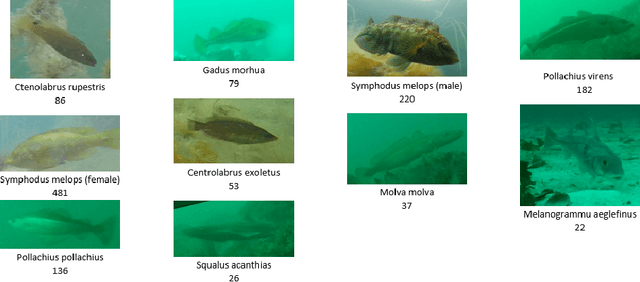

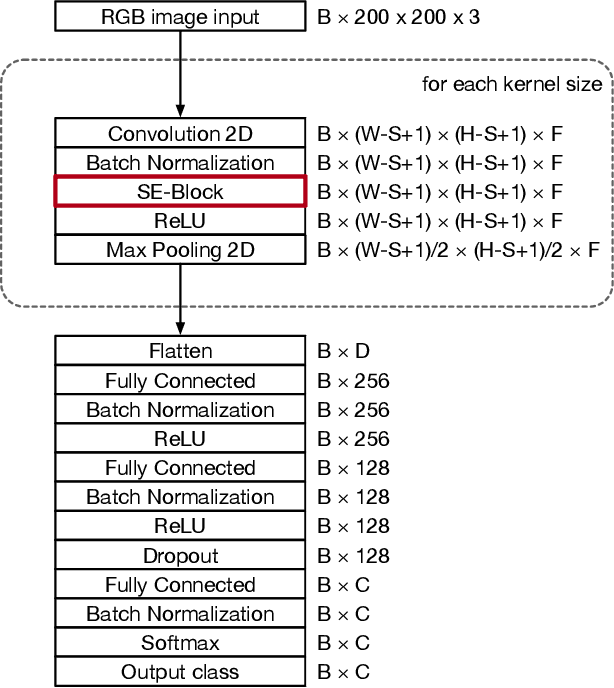

Abstract:Our understanding and ability to effectively monitor and manage coastal ecosystems are severely limited by observation methods. Automatic recognition of species in natural environment is a promising tool which would revolutionize video and image analysis for a wide range of applications in marine ecology. However, classifying fish from images captured by underwater cameras is in general very challenging due to noise and illumination variations in water. Previous classification methods in the literature relies on filtering the images to separate the fish from the background or sharpening the images by removing background noise. This pre-filtering process may negatively impact the classification accuracy. In this work, we propose a Convolutional Neural Network (CNN) using the Squeeze-and-Excitation (SE) architecture for classifying images of fish without pre-filtering. Different from conventional schemes, this scheme is divided into two steps. The first step is to train the fish classifier via a public data set, i.e., Fish4Knowledge, without using image augmentation, named as pre-training. The second step is to train the classifier based on a new data set consisting of species that we are interested in for classification, named as post-training. The weights obtained from pre-training are applied to post-training as a priori. This is also known as transfer learning. Our solution achieves the state-of-the-art accuracy of 99.27% accuracy on the pre-training. The accuracy on the post-training is 83.68%. Experiments on the post-training with image augmentation yields an accuracy of 87.74%, indicating that the solution is viable with a larger data set.
 Add to Chrome
Add to Chrome Add to Firefox
Add to Firefox Add to Edge
Add to Edge